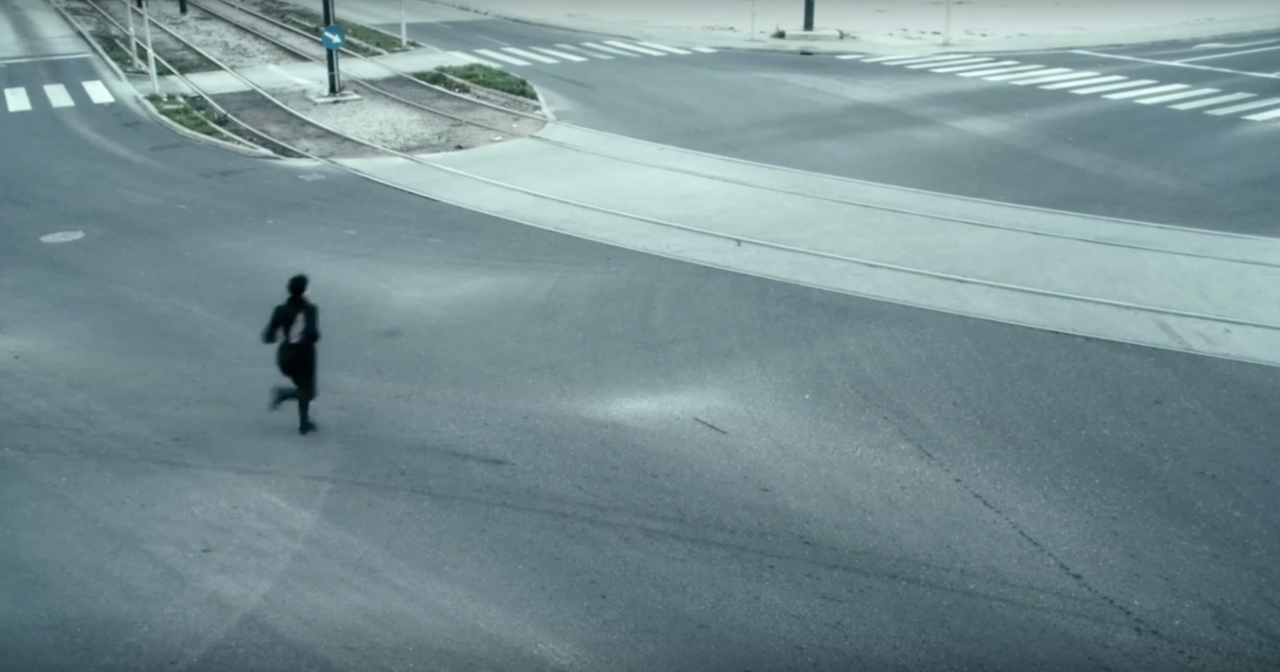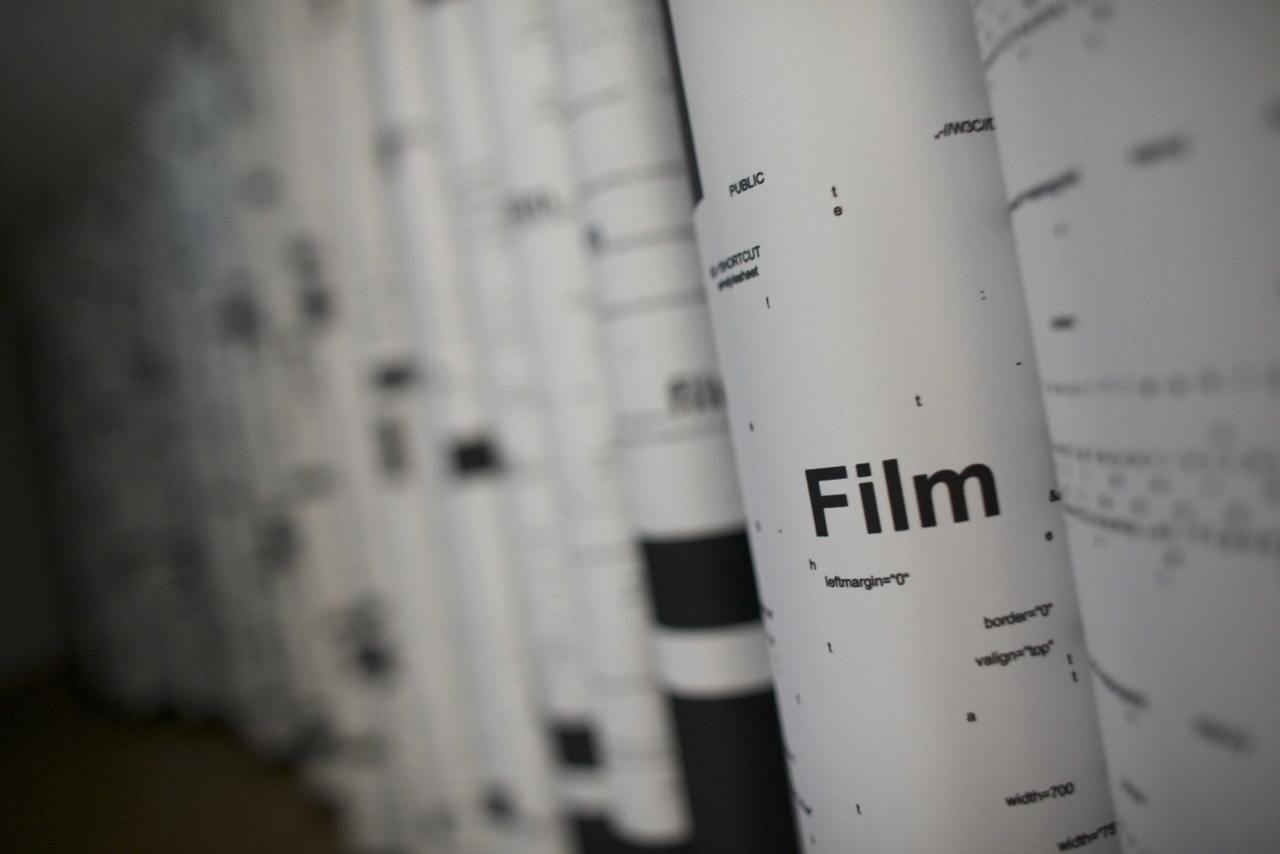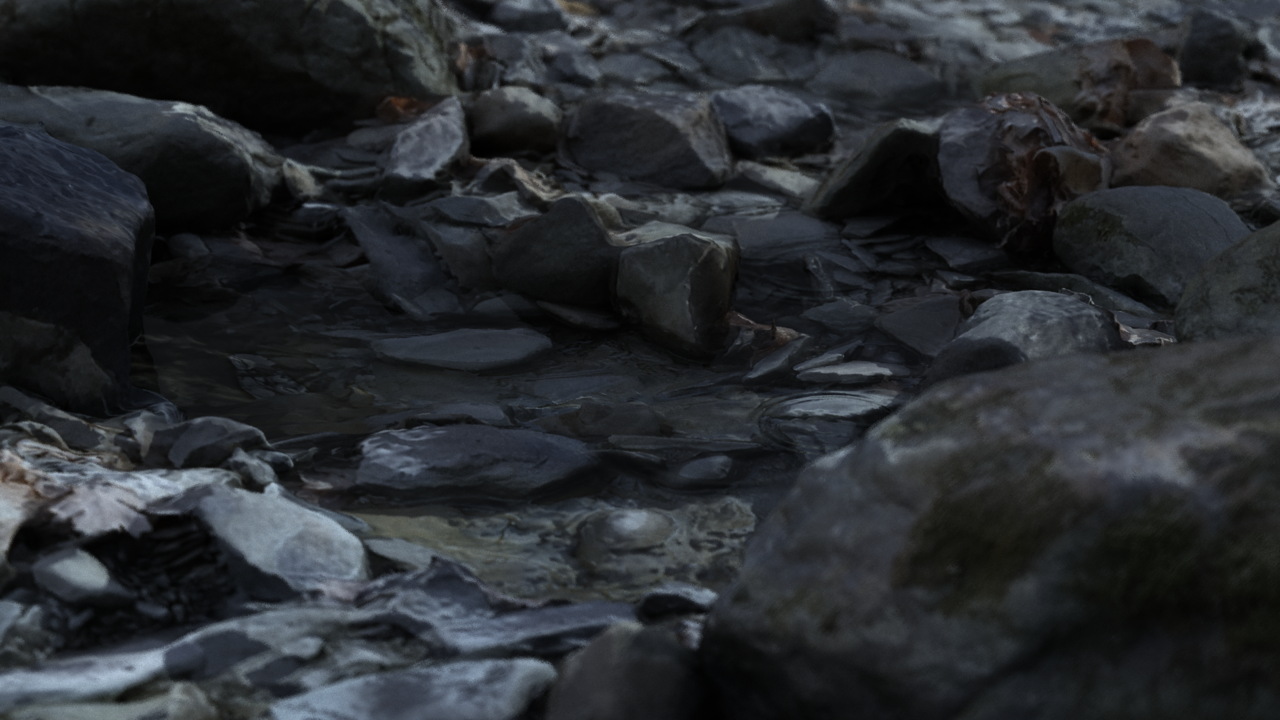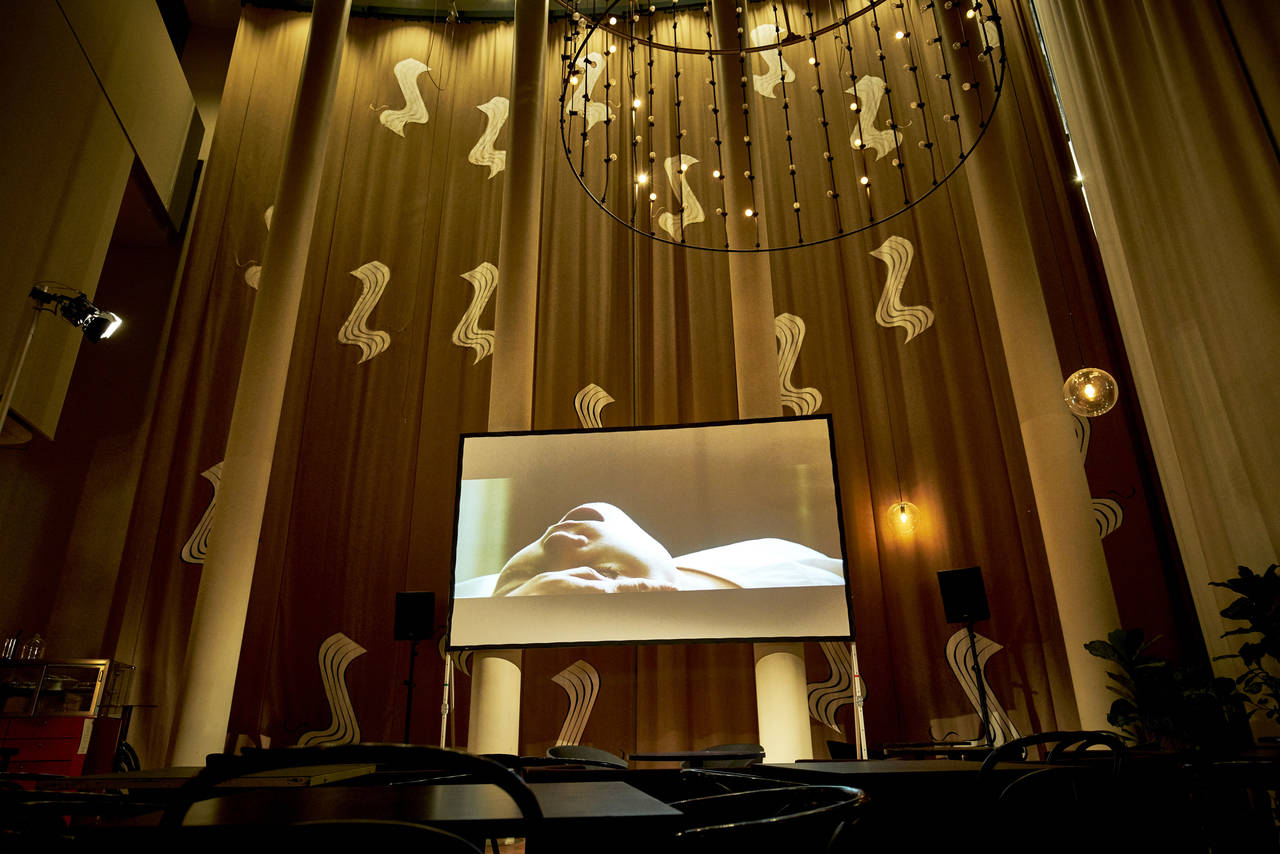KEREN CYTTER
Images and written or spoken texts encounter one another asynchronously in Keren Cytter’s films, accompanied by music, and give the impression of revolving around a certain content. In most cases psychological themes can be linked with the various figures. Yet it remains uncertain whether the film itself dictates these associations or they are evoked by the viewers’ imaginations, and this vagueness accounts for the rather eerie mood. The virtual “staging” of the protagonists is reminiscent of theatre. At the same time, with abrupt transitions, camera work, cross-fading and obvious use of found footage, the film medium also loudly calls attention to itself. Born in Tel Aviv in 1977 and now living in New York, the artist also orchestrates performances that take place directly in front of an audience. Solo exhibitions of her works have been presented by the Stedelijk Museum, Amsterdam, the Moderna Museet, Stockholm, the Mumok, Vienna, and the Tate Modern, London.


MATHILDE TER HEIJNE
The analysis and exposure of patriarchal patterns of thought and power in society constitute a central theme in Mathilde ter Heijne’s works. She moreover pursues ways of preserving the knowledge of social minorities and passing them on. The video Lament (2010), for example, was produced on the basis of a mourning workshop organized by the artist in Suomenlinna, Helsinki, Finland, where a professional singer gave instruction in dirge-singing. The combination of song and weeping is a means of coping with bereavement practised by women all over the world . Its purpose is to help overcome traumatic experiences, link the past with the present and pave the way to the future. Born in Strasbourg in 1969, the Dutch video and installation artist studied art at the Stadsacademie, Maastricht and the Rijksacadmie Amsterdam. She has been teaching at the Kunsthochschule in Kassel since 2011.


NEIL BELOUFA
Neil Beloufa was born in Paris in 1985 and studied in Paris, New York and Valencia from 2004 to 2009. His video Kempinski (2007) won numerous prizes, for example at the International Short Film Festival Oberhausen in 2008. This early video piece already anticipates his interest in ethnographic observations, science fiction and the analysis of present-day society. In Neil Beloufa’s artistic work, video is increasingly present as an installation element reflecting a spatial dimension that comes to bear simultaneously in the videos themselves: in a landscape immersed in nocturnal black, as in Kempinski, or in the Futurist glass architecture of a so-called Corporate City uniting work and life in the video People’s passion, lifestyle, beautiful wine, gigantic glass towers, all surrounded by water of 2011. Neil Beloufa has had exhibitions at the Hammer Museum in Los Angeles, the Palais de Tokyo in Paris, the Kunsthaus Bregenz and the Kunstraum Innsbruck.


ED ATKINS
In his works, traditions of film and literature correlate with the virtual aesthetic of contemporary image media such as digital film, computer-generated pictures or the Internet. His analysis of the various means of reproducing reality and narrative structure expose the boundaries between the immateriality of the medium and the material world of the viewer. The video installations by Ed Atkins, a British artist born in 1982, have been featured by such major shows as the 2013 Lyon and Venice Biennales and are presently on view in a solo exhibition at the Kunsthaus Zürich.


JAMES RICHARDS
Contrary to claims of linear narrative forms, the fragment and the fragmentary have been on the menus of post-modern discourses since the 1980s. James Richards (b. 1983) assembles his films from found footage and image data taken from the Internet. As opposed to mere conglomeration, his work results in incommensurability – compositions made of ingredients that, in and of themselves, isolated from the narrative stream, represent archetypes richly furnished with emotion. By exposing the manifold levels and layers of images, he also liberates those images from the ideology of their original medium and elicits ambiguous effects from them. A native of Wales now living in Berlin, the artist has had exhibitions at the Friedericianum in Kassel (2013–14), the Chisenhale Gallery (2011) the Tate Britain in London (2010), the New Museum in New York (2009) and elsewhere.


ULLA VON BRANDENBURG
Rituals are familiarizations with social identities, consonances of individual polyphonic voices. Intruders in ritualized constitutions question their orders or enrich them, depending on mutual acceptance. The stage-like arenas in which Ulla von Brandenburg has such confrontations “performed” facilitate the visibility of ritualized and regimented orders. Her virtual dramas involve the outsider – in general the viewer – both physically and psychologically. The artist (born in Karlsruhe in 1974, now lives in Paris), in whose work film and stage take on a sculptural dimension, has had solo exhibitions at such venues as the Kunsthalle Zürich (2006), the IMMA in Dublin (2008), the Chisenhale Gallery in London (2009), the Wiener Secession (2013) and the Kunstverein Hannover (2014), to name just a few.


BERTILLE BAK
Eastern European immigrants in New York, Sinti and Roma in Paris, the occupants of a house in Bangkok slated for demolition – these are the protagonists of Bertille Bak’s films. They are presented not so much as individuals, but as part of a social minority existing within an overwhelmingly powerful capitalist system from which they are excluded. Before their home is demolished, the Thai tenants use flashlights to perform the score of a revolutionary song – which Bak has transposed into a sequence of light signals – on the balconies of their flats. The silent song is a symbol of their inability to defend themselves audibly against the building’s demolition. Born in Arras, France in 1983, the artist lives and works in Paris. Her work has been presented at the Musee d’Art Moderne de la Ville de Paris, the Palais du Tokyo, the Bielefeld Kunstverein, and within the framework of the Paris Triennale.


DANI GAL
For his film works, Dani Gal draws from historical documents and conversations with witnesses to the historical events. His latest film As from Afar is based on the correspondence between the architect and Holocaust survivor Simon Wiesenthal and Hitler’s architect, Albert Speer. Night and Fog makes use of interviews with Michael Goldmann-Gilad, who was involved in the secret mission to dispose of Adolf Eichmann’s ashes. The focus on the historical occurrence is foregrounded within the filmic fiction, sparking reflection on the creation of historical narrative, the role and function of memory and its translation into the present. Gal’s works have been showcased at the Biennale di Venezia and the New Museum New York. They are presently on display in a solo exhibition at the Kunst Halle Sankt Gallen and are scheduled to travel to the Jewish Museum of New York in the autumn of 2014.


NEVIN ALADAG
Everyday situations or objects often form the basis of Nevin Aladağ’s works. The artist is interested in the peculiarities of cultural imprint as conveyed by the history, material and origins of objects. Musical instruments of various cultures, for example, are “played” in her films by natural forces such as wind or rain. Born in Turkey in 1972, Aladağ studied at the Munich art academy and has lived in Berlin since 2002. Her works have been exhibited at a wide range of venues including the Sharjah Biennial (2013), the Haus der Kunst, Munich (2011), The Hayward Gallery, London (2010) and the 11th International Istanbul Biennial (2009), and are on view this summer at the Kunsthalle Basel.


MOHAMED BOUROUISSA
In Mohamed Bourouissa’s video works, the recorded material dictates the form of the filmic presentation, a process particularly evident in Temps mort documenting the artist’s WhatsApp communication with a prison inmate. The recordings are unspectacular; the artist's written requests to his correspondent to send pictures of his surroundings – for instance the view through the window or of the prison cafeteria – structure the film. The people in Bourouissa’s films are not just the protagonists but also the authors of the works. The form of the recording in “Legend” likewise conveys that his films are not so much a view from the outside as the product of the specific situation. Bourouissa’s works have been presented at the Philadelphia Museum of Art and the New Museum New York and, concurrently with his participation in Double Feature, are on view in a solo exhibition at the Haus der Kunst in Munich.


BJØRN MELHUS
Since the early nineties, the German-Norwegian artist Bjørn Melhus has been investigating the influence of cinema and television in his works. With devices such as filmic quotations and repeated stagings, deliberate exaggerations and omissions in seemingly well-known film material, he creates threatening “doubles”. His stories, in which he himself plays all of the roles, oscillate between creepy fairy tales and the grotesque. It is not his own identity that forms the focus of his works, but the boundary between the self and the media world. Bjørn Melhus has been teaching at the Kunsthochschule Kassel since 2003. His films and film installations have been featured at the Serpentine Gallery in London, the Witte de With in Rotterdam, the Whitney Museum in New York, the Sprengelmuseum in Hanover and elsewhere.


JEREMY SHAW
Originally from Vancouver, Jeremy Shaw has been living in Berlin since 2007. In his work he explores new forms of transcendence and extension. What he proposing is an art form that oscillates between science and something that goes beyond the everyday: In his studio, the Techno shaman not only employs black light and a beamer, but chemical substances too. In one of his first video pieces he had some friends try the hallucinogenic drug DMT and recorded its effects, while Kirlian photographs Shaw took of his own body testify to the manipulability that in his case reflects the differences in the music he consumed. In addition to art, Jeremy Shaw experiments with the potential of drugs and intoxication in other areas as well: for example in Circlesquare, an electronic music project, or its more danceable offshoot Headgear, a project Shaw is doing together with Konrad Black.






